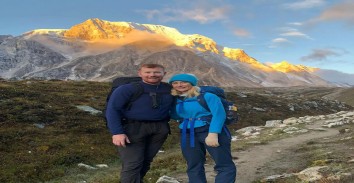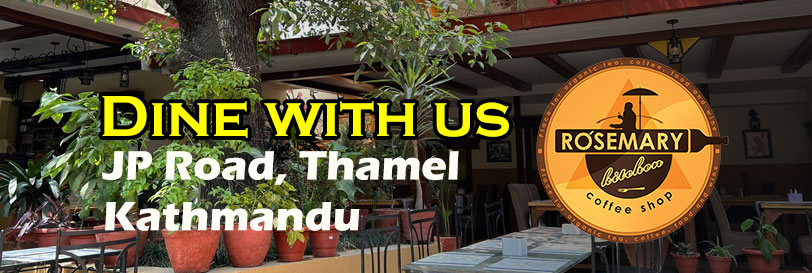Overview And Highlights
TRIP FACTS

" A journey to a concealed, undiscovered treasure nestled in a secluded setting far from the well-trodden paths. "
Tsum Valley Trekking, a magnificent journey into remote and isolated country beyond Nepal North Mid West Himalaya, sandwiched between great range of mountains of Manaslu and Ganesh Himal, Tsum known as valley of Happiness in local native language of Tibetan origin.
A fascinating adventure that leads you into hidden areas and Shangri-la of Himalaya away from maddening crowd of modern civilization into pristine wilderness of mountains-windswept beautiful country with impressive local culture of Tsum valley.
A perfect adventure destination for people who bored walking on mainstream trekking trails on popular routes, as this trip allows you being in complete tranquil in the harmony of interesting colorful culture and ancient traditions as it was past hundred of centuries.
Tsum Valley Trekking, commence with an interesting overland journey into Nepal Mid Western areas of Gorkha district, where walks at first leads on same tracks of Manaslu route and then on leaving the raging Buri-Gandaki River heading into unknown and hidden areas at Tsum valley.
Walk leads into nice lovely farm villages and forest filled with enchanting rhododendron-magnolia-oaks and pines trees, as walk proceeds leaving the green vegetation and tree lines behind for wild windswept country similar to dry Tibetan landscapes which is close beyond Mu Gompa our final destination around Tsum Valley.
With ample to explore within beautiful Tsum and its traditional villages exploring the areas with tour of impressive monasteries of Mu Gompa and Rachen Gompa, then heading back to the road head at Soti-Khola for scenic and exciting drive back to Kathmandu with fond memories and magnificent adventure on Tsum Valley Trekking.
Highlights Of Tsum Valley Trekking
- Grand panorama of Ganesh and Manaslu Himalaya that surrounds beautiful Tsum valley
- Exploring cultural and traditional Tsum villages similar to Tibetan Buddhist culture and origin
- Walking into enchanting forest covered with tall rhododendron and magnolia tree lines
- Daily views of mountains walking into remote and isolated valley of happiness at Tsum.
Best Season For Tsum Valley Trek
Spring ( March to May)
- Days are pleasantly warm, but nights may get cool. Temperatures increase as the season goes on, offering clear and crisp views of the Manaslu range and surrounding peaks. Rhododendrons and alpine flowers bring vibrant colors to the trail. It's a moderately busy season, making it the second most favored time for trekking.
Summer/Monsoon ( June to August)
- Damp from monsoon rains, with a risk of landslides in specific areas.Frequently overcast, limiting mountain views. Valleys are at their lushest, adorned with a variety of flora. It's a less popular trekking season, and hikers should be ready for leeches on the trail.
Autum ( September to November)
- Consistently mild temperatures, providing stable and reliable weather with warm days and cool nights. You'll enjoy superb mountain vistas under clear skies, making it ideal for photographers. The landscapes are lush from the recent monsoon season. Keep in mind that this is the peak trekking season, so expect crowded trails and possibly fully booked teahouses.
Winter ( December to February)
- Chilly, particularly at higher elevations, with the possibility of snowfall. Days are typically clear and sunny, but nights are extremely cold. Excellent, especially when the days are clear. The snowy landscapes have their unique allure. Alpine vegetation remains dormant. Fewer fellow trekkers mean a quieter journey. Be prepared for the possibility of some teahouses being closed during the off-season.
Equipments
- A pair of half-golves
- A pair of Woolen shocks
- A wool jacket or pullover, Water and Windproof shell jackets
- long sleeve t-shirts
- Windproof and Waterproof Trousers (warmer), Comfortable trekking pants
- Water Trekking Boots/ Pair of sandals
- First Aid kits and Medicine
- Backpack with rain cover
- Water Bottle
- Headlamp or torch
- Sunscreen / Sunglasses / Sunhat
- Sleeping bag
- Trekking Poles
- Chapstick
- Camera & Batteries
- Power adapter and chargers
- Travel Towel
- Toiletries
Tsum Valley Trek Cost – Group Pricing (Per Person in USD)
| Group Size | Budget Package | Standard Package | Premium Package |
|---|---|---|---|
| 1 Person (Solo) | $990 | $1,690 | $2,390 |
| 2 People | $920 | $1,550 | $2,150 |
| 3–7 People | $870 | $1,460 | $2,010 |
| 8–12 People | $830 | $1,390 | $1,910 |
| 13–20 People | $800 | $1,330 | $1,820 |
✅ Budget = permits (restricted), guide, local bus/jeep, tea houses, no meals
✅ Standard = meals, porter, 3★ hotel in Kathmandu, tourist bus + jeep
✅ Premium = 4–5★ hotels, private jeeps, best lodges, extras
Itinerary Expand All Close All
Morning traveling by coach or in private vehicles (depending upon group size), where drive leads on interesting and exciting Kathmandu & Pokhara highway to reach at Arughat town and beyond to Soti-Khola village.
On drive views of mountain and scenic landscapes as journey leads past number of farm villages and towns and then ending the drive at Soti Khola small farm village for first overnight stop within Nepal Mid West region.
Food
BLD
Accomodation
Lodge
Elevation
845
First day walk from Soti- Khola leads to a short climb for a while with rest of the walk on gradual winding uphill trail through terraced farm fields and villages.
As our route enters into cool forested area in a gorge following torrential glacial Buri-Gandaki River upstream, as the path follows with a climb in the cool shade of rhododendron and oaks forest after a good walk of near six hours reaching a moderate size village at Maccha-Khola for overnight stop. (Name of the village means a fish stream)
Food
BLD
Accomodation
Lodge
Elevation
930
After pleasant overnight at Macha-Khola, morning walk follows Buri-Gandaki River upstream, to reach Khorla Beshi a small farm village from here on winding path to reach at Tatopani village with “Hot Spring,” an opportunity for hot bathe as time allows.
After a pleasant stop, walk to Dovan and Yaruphant villages and then at Jagat for overnight stops, Jagat a moderate size farm villages with shops and stores.
Food
BLD
Accomodation
Lodge
Elevation
1410
From Jagat, morning walk leads to higher areas passing scattered farm villages with short climb and downhill to cross over a bridge to reach at Nagjet and Philim, a large village with spread-out farm houses. After Philim walk through farm terraces of golden fields of wheat’s and barley, then a climb on rocky ridge top into bamboo forest area to our overnight stop at Lakuwa on leaving the main trail of Manaslu trekking route.
Food
BLD
Accomodation
Lodge
Elevation
2240
After Lakuwa village and leaving Buri-Gandkai River for a week, our walk heads towards Tsum valley into the valley of happiness, as our route enters narrow gorge then with short descend and uphill climb into rhododendron and pine tree forest walking past small farm villages then climbing above Lungwa Khola to reach at Chumling village for first overnight in Tsum Valley.
Food
BLD
Accomodation
Lodge
Elevation
2386
From here altitude slowly gains with the mountain views of Ganesh Himal peaks, as the villages and landscapes looks similar to Tibetan windswept plateau. Morning walks with downhill to cross a bridge over Smatiking Khola, with views of Ganesh Himal also known as Yangra at 7,422 m high, walk slowly leads at Chokhan-paro village for overnight stop.
Food
BLD
Accomodation
Lodge
Elevation
3010
After Chokan-paro heading closer towards upper Tsum area to Nele (Ne-lay) starting with a climb onto open valley within windswept country exists only few small trees that survives around this arid terrain.
Walk continues uphill with views of Ganesh and Manaslu Himal, after a pleasant walk reach at Nele on the way with visit to an old cave of 11th Centaury Saint Milarepa famous and popular Buddhist poet, singer, tantric guru his folk-tales and songs still remembered by Tibetans and Buddhist alike.
Food
BLD
Accomodation
Lodge
Elevation
3361
Morning walk starts on reaching our highest point at Mu Gompa of the adventure, as walk continues with a climb on high arid terrain offering views of high peaks on the way to Mu Gompa for overnight stop.
Food
BLD
Accomodation
Lodge
Elevation
3700
Rest and free day at Mu Gompa to explore the village with visit of old Mu Gompa enriched with ancient antique scrolls, statue and relics this is one of the most important monastery of Tsum and Manaslu area.
Food
BLD
Accomodation
Lodge
Elevation
3700
After an interesting and wonderful time at Mu Gompa return journey visiting another impressive monastery of Rachen Gompa, walk leads on nice path with few short climbs and downhill passing few small villages of cattle herders to reach at Rachen Gompa for overnight stop, afternoon visit Rachen monastery.
Food
BLD
Accomodation
Lodge
Elevation
3240
Today our last day around Tsum valley, as morning leads to long descend to reach Chumling village pastg farm areas and then back into tree lines, after a long downhill walks reaching at Chumling village for last overnight stop within Tsum areas.
Food
BLD
Accomodation
Lodge
Elevation
2386
From Chumling village, morning walk downhill following river downstream with views of waterfalls then reaching villages of Samba, Tingding Chhupyang till our walk ends at Philim village for overnight stop.
This is a nice farm village with school supported by Japanese (as Mt. Manaslu was first climbed by Japanese so this area is a favorite among Japanese)
Food
BLD
Accomodation
Lodge
Elevation
1590
From here onwards into warmer area of paddy fields, after a breakfast walk leads to Tatopani following Buri Gandaki River past small villages of Nagjet, Sidibas Bazaar and Jagat.
Walk further descends to Yaruphant, then he towards lower area with dramatic change in vegetation, finally ending our long day walk at Tatopani for overnight stop, a small farm village with hot spring as Tatopani in Nepali means 'hot water', afternoon enjoy in the hot springs and relax. The local believes warm spring water have a natural power to cure various diseases.
Food
BLD
Accomodation
Lodge
Elevation
1240
After a nice time at Tatopani and hot spring, morning walk leads to Soti Khola walking along Budhi Gandaki River downstream, after hours of good walk reaching Gurung village of Labubesi, from here walk further past terraced fields and waterfalls to reach our last overnight stop at Soti-khola.
Food
BLD
Accomodation
Lodge
Elevation
845
Morning drive back to Kathmandu on same interesting highway with exciting time as drive leads through rural farm villages and towns with views of mountains after six hours journey reaching in Kathmandu, then transfer to your respective hotels.
Food
Breakfast
Accomodation
Hotel
Elevation
1350
Services Included on Price
Cost Includes
-
Includes:
-
Accommodation
-
Tea house/lodge stays during trek (basic, twin-sharing)
-
-
Transport
-
Local bus Kathmandu → Soti Khola (trek start)
-
Local bus Soti Khola → Kathmandu (return)
-
Airport pick-up in Kathmandu
-
-
Meals
-
Not included – trekkers pay directly at lodges
-
-
Guide & Porter
-
Licensed, English-speaking trekking guide (mandatory for restricted area)
-
No porter service (optional at extra cost)
-
-
Permits & Fees
-
Manaslu Restricted Area Permit (RAP)
-
Tsum Valley Restricted Area Permit
-
Manaslu Conservation Area Permit (MCAP)
-
Annapurna Conservation Area Permit (ACAP)
-
-
Extras
-
Pre-trek briefing in Kathmandu
-
Basic first aid kit with guide
-
Cost Excludes
-
Meals in Kathmandu & during trek
-
Hotel accommodation in Kathmandu
-
Porter service (optional)
-
Personal trekking gear (jackets, poles, sleeping bag, etc.)
-
Hot showers, Wi-Fi, charging in lodges (paid locally)
-
Travel insurance (mandatory)
-
International airfare & Nepal visa fees
-
Alcohol, bottled water, snacks
-
Tips for guide, porter, driver
-
Costs due to delays/weather/natural disasters
Standard Package Service Excludes
-
Accommodation
-
2 nights in 3★ hotel in Kathmandu with breakfast
-
Tea house/lodge stays during trek (twin-sharing)
-
-
Transport
-
Tourist bus Kathmandu → Soti Khola
-
Private jeep (where required for rough sections)
-
Tourist bus return Soti Khola → Kathmandu
-
Airport transfers in Kathmandu
-
-
Meals
-
Breakfast in Kathmandu
-
All meals during trek (breakfast, lunch, dinner with tea/coffee)
-
-
Guide & Porter
-
Licensed, English-speaking trekking guide
-
Porter service (1 porter for 2 trekkers, 15–20 kg)
-
-
Permits & Fees
-
Manaslu Restricted Area Permit (RAP)
-
Tsum Valley Restricted Area Permit
-
Manaslu Conservation Area Permit (MCAP)
-
Annapurna Conservation Area Permit (ACAP)
-
-
Extras
-
Pre-trek briefing
-
First aid kit with oximeter
-
Standard Package Service Excludes
-
Lunch & dinner in Kathmandu
-
Personal trekking equipment (rentable in Kathmandu)
-
Hot showers, Wi-Fi, charging in lodges (paid locally)
-
Travel insurance
-
International airfare & Nepal visa fees
-
Alcohol, bottled water, snacks
-
Tips for guide, porter, driver
-
Extra costs due to delays/weather
Luxury Package Service Includes
-
Accommodation
-
2 nights in 4–5★ hotel in Kathmandu with breakfast
-
Best available lodges during trek (attached bathroom where possible)
-
-
Transport
-
Private jeep Kathmandu → Soti Khola (trek start)
-
Private jeep return Soti Khola → Kathmandu
-
Luxury transfers in Kathmandu
-
Welcome & farewell dinners in Kathmandu
-
-
Meals
-
All meals during trek with wide menu options
-
Breakfast in Kathmandu
-
Welcome & farewell cultural dinners
-
-
Guide & Porter
-
Senior trekking guide (restricted area experienced)
-
Porter service (20–25 kg per porter)
-
Staff insurance included
-
-
Permits & Fees
-
Manaslu Restricted Area Permit (RAP)
-
Tsum Valley Restricted Area Permit
-
Manaslu Conservation Area Permit (MCAP)
-
Annapurna Conservation Area Permit (ACAP)
-
-
Extras
-
Loaner trekking gear (sleeping bag, down jacket, trekking poles)
-
Emergency evacuation coordination (insurance required)
-
Daily health monitoring with oximeter
-
Cultural sightseeing in Kathmandu (optional add-on)
-
Luxury Package Service Excludes
-
International airfare
-
Nepal visa fees
-
Comprehensive travel insurance
-
Personal expenses (souvenirs, laundry, phone calls)
-
Alcohol, bottled water, soft drinks
-
Tips for guide, porter, driver
-
Optional upgrades (helicopter, single supplement)
-
Costs due to delays/weather/natural disasters
Tsum Valley Trekking Altitude Profile
Route Map

FAQs
The best time for Tsum Valley Trekking is during the spring season (March to May) and autumn season (September to November) when the weather is mild, and the skies are clear. During these seasons, the views of the Himalayan peaks are stunning, and the trails are not too slippery.
The Tsum Valley Trekking usually takes around 15 to 20 days, including the days for acclimatization and rest. However, the duration of the trek can be customized according to your preferences and fitness level.
The Tsum Valley Trekking is a moderately difficult trek that requires a good level of fitness and stamina. The trek involves long and steep ascents and descents, and you will be walking for several hours a day. Proper preparation and acclimatization are necessary to complete the trek successfully.
Yes, you need two permits for Tsum Valley Trekking: the Manaslu Conservation Area Permit (MCAP) and the Annapurna Conservation Area Permit (ACAP).
During Tsum Valley Trekking, you will be staying in tea houses or guesthouses that offer basic amenities such as a bed, blanket, and shared bathroom facilities. The accommodation is simple but clean and comfortable. In some remote villages, you may have to stay in camping tents.
The highest point of Tsum Valley Trekking is the Mu Gompa at an altitude of 3,700 meters (12,139 feet). Proper acclimatization is necessary to avoid altitude sickness.
During Tsum Valley Trekking, you will get a variety of food options ranging from local Nepali dishes like dal bhat (rice and lentils) to international cuisine like pasta and pizza. The tea houses and guesthouses also offer snacks, tea, coffee, and soft drinks.
Tsum Valley Trekking requires permits, and you must be accompanied by a licensed guide. You can hire a guide and arrange for permits through a trekking agency or directly from the Nepal Tourism Board in Kathmandu.
You should pack warm clothes, comfortable trekking shoes, a backpack, a sleeping bag, a water bottle, a first aid kit, and toiletries. It is also advisable to carry a camera, sunglasses, and sunscreen.
Tsum Valley Trekking is generally safe, but it is always advisable to trek with a licensed guide and follow their instructions. You should also be prepared for unexpected weather changes and carry adequate warm clothing and equipment. It is important to take necessary precautions to avoid altitude sickness and stay hydrated.

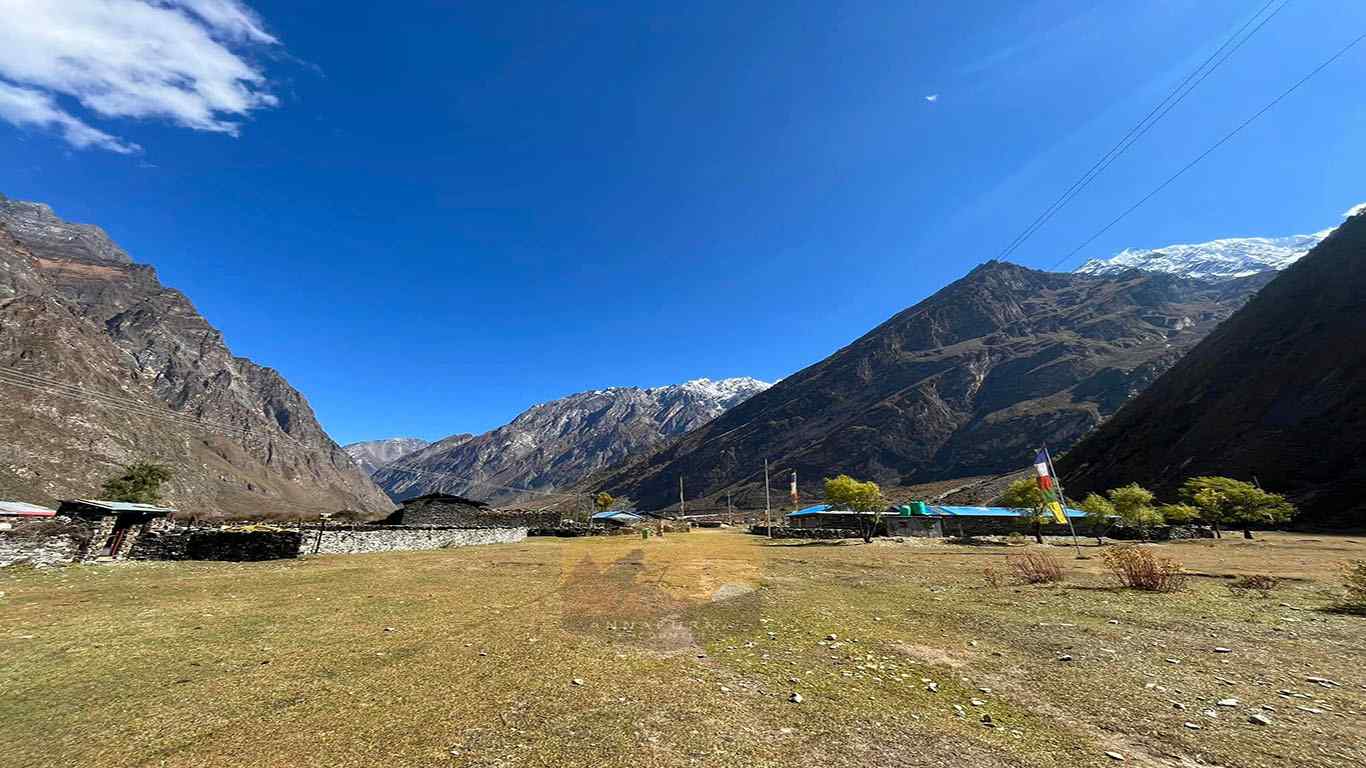
_11zon.jpg)

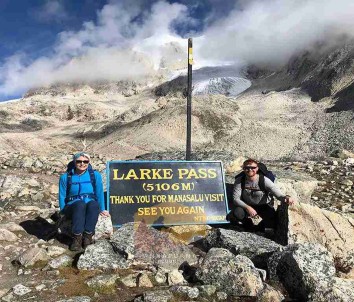
.jpg)
.jpg)
.jpg)
.jpg)
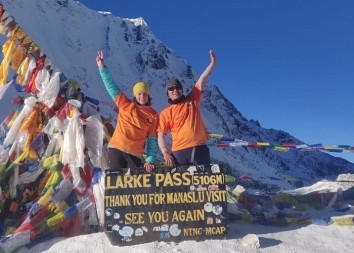
.jpg)
.jpg)
